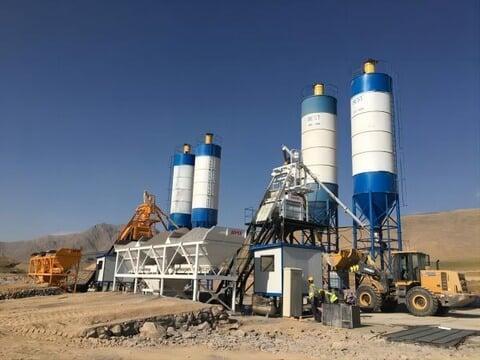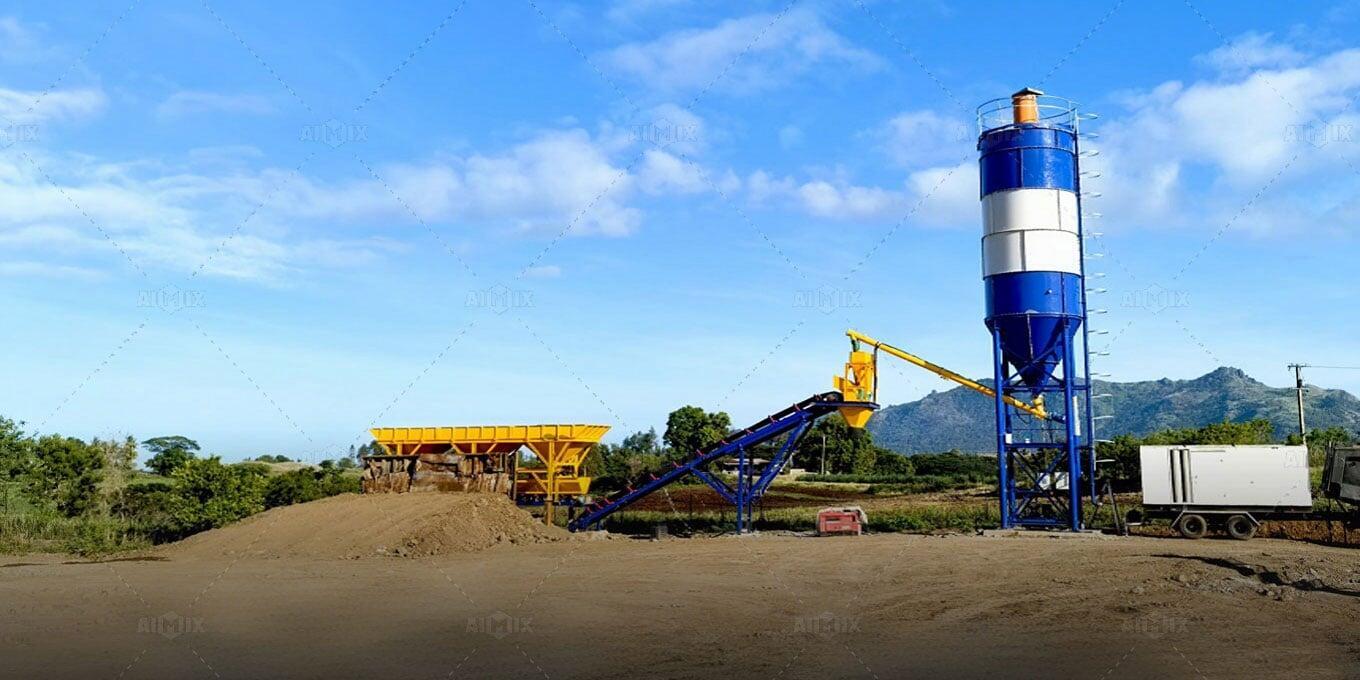The concrete batching plant market offers a spectrum of options, from basic manual operations to fully automated production facilities, with pricing tiers that reflect dramatic differences in capability, efficiency, and long-term value. Understanding these concrete batching plant price segments—typically ranging from $100,000 for entry-level plants to over $1 million for premium systems—requires analyzing not just initial costs but total operational economics. Each tier serves distinct market needs, with trade-offs between capital expenditure and production capabilities that significantly impact profitability.
Entry-Level Plants: Affordable But Limited
Budget plants in the $100,000-$300,000 range prioritize simplicity over sophistication, offering manual or semi-automatic operation with production capacities of 30-60 m³/hour. These systems typically feature basic aggregate batchers, mechanical weighing systems, and minimal automation. While their initial price appeals to small contractors or emerging markets, their limitations become apparent in sustained operation: higher labor requirements (3-4 operators), batch consistency variations up to ±5%, and energy inefficiencies that add 15-20% to production costs.

The maintenance profile reveals another cost factor. Entry-level plants use standard industrial components rather than purpose-built concrete equipment, leading to 30-40% shorter lifespans for wear parts like mixer blades and conveyor belts. Their lack of advanced controls also means no remote monitoring or predictive maintenance capabilities, resulting in 2-3 times more unplanned downtime than automated plants. For operations producing less than 50,000 m³ annually or working on short-term projects, these compromises may be justifiable—but scaling beyond this volume quickly exposes their economic constraints.
Mid-Range Systems: Balanced Performance
The $300,000-$700,000 mid-tier segment delivers the optimal balance for most commercial operations, offering 75-120 m³/hour capacity with computerized control systems. These mobile concrete batching plants introduce critical upgrades like load cell batching (±1% accuracy), touchscreen HMIs, and basic production reporting. Automated material handling reduces staffing needs to 1-2 operators while improving safety through enclosed conveyors and reduced manual material handling.
Technological differentiation becomes apparent in their maintenance designs. Purpose-built mixers with hardened alloy blades last 2-3 times longer than entry-level equivalents, while centralized lubrication systems extend bearing life by 40%. Many mid-range plants now include modular designs that allow capacity expansion—a crucial feature for growing businesses. Their energy systems, though not cutting-edge, incorporate variable frequency drives that cut power consumption by 18-25% compared to basic models. The sweet spot emerges for producers making 50,000-200,000 m³ annually, where the 30-35% higher initial cost pays back through labor savings and improved efficiency within 2-3 years.

Premium Automated Facilities: Maximum Efficiency
High-end plants ($700,000-$1.5M+) redefine production standards with 150-300 m³/hour capacities and full Industry 4.0 integration. These systems feature robotic material sampling, AI-powered mix optimization, and predictive maintenance algorithms that forecast component failures with 90% accuracy. Their precision goes beyond batching—advanced slurry mixers achieve perfect particle distribution while using 8-12% less cement for equivalent strengths.
Automation reaches its zenith in these facilities. Autonomous loaders feed aggregates based on real-time stockpile monitoring, while self-cleaning systems eliminate between-batch contamination. Integrated energy management coordinates solar arrays, battery storage, and grid power to minimize costs. The ROI calculus shifts from simple production to total lifecycle value—premium portable concrete batch plant for sale maintain resale values 50-60% higher after five years compared to mid-range models.
The operational data reveals their superiority: 98% uptime rates, labor costs 60% lower than entry-level plants, and batch consistency within ±0.5%. For producers exceeding 200,000 m³ annually or supplying critical infrastructure projects, these plants don’t just improve margins—they enable quality and scale unattainable with lesser equipment. The price premium becomes not an expense but a strategic investment in market leadership.
Choosing between these tiers ultimately depends on production volume, project duration, and quality requirements—but understanding their fundamental differences ensures buyers match capabilities to their business ambitions rather than just their current budgets.
